Most industries are facing automation and job cuts. But one field is growing, and human expertise is more valuable than ever: ABA therapy.
RBT skills are in higher demand than ever, with jobs growing at 11% which is almost 3X the national average.
But growth doesn’t automatically mean job security.
Being an RBT isn’t just about meeting basic requirements.
You need advanced RBT skills like clear communication, patience, problem-solving, cultural sensitivity, and teamwork to stand out.
Starting in 2026, the BACB will require 12 hours of continuing education every two years. They want professionals who keep learning and evolving their behavior technician training.
This change is creating two types of RBTs:
- Those who coast on credentials and compete for the same entry-level roles.
- Those who build real RBT skills, become indispensable, and have families and supervisors requesting them by name.
In this blog, we’ll cover the 7 core RBT skills every professional must master to thrive.
Let’s dive in.
How Strong RBT Skills Set You Apart in 2025
The field’s getting crowded. Everyone has the basic certification, but not everyone has the RBT skills to grow and scale in an ABA career.
In 2025, employers and BCBAs are looking for RBTs who can do more than follow instructions.
They want practitioners who can think on their feet, adjust ABA therapy techniques in real time, collaborate seamlessly with a team, and connect meaningfully with diverse clients.
The RBTs who master these essential RBT skills drive results, improve client outcomes, and open doors for career growth.
Investing in your behavior technician training now means you’ll be the RBT everyone relies on.
You’ll handle challenges confidently, gain respect from your team, and see measurable impact in the clients you serve.
In a crowded field, your RBT skills are to your advantage.
Before diving into these 7 essential RBT skills, see where you stand today. Our FREE RBT Mock Test mirrors the actual exam format and identifies your weak areas so you can focus your study time where it matters most. Take it now and get instant feedback.
7 Core Skills Every RBT Must Master
- Effective Communication Skills
This is the #1 most valuable RBT skill you can develop. Every interaction, whether with a client, a parent, a teacher, or a supervisor, depends on it.
So what is the definition of effective communication in behavior technician training?
It means you must know how to:
- Break down tasks into simple, easy-to-follow steps
- Give feedback that guides without discouraging
- Actively listen to parents, clients, and team members
- Adapt your words (or visuals) depending on who you’re speaking to
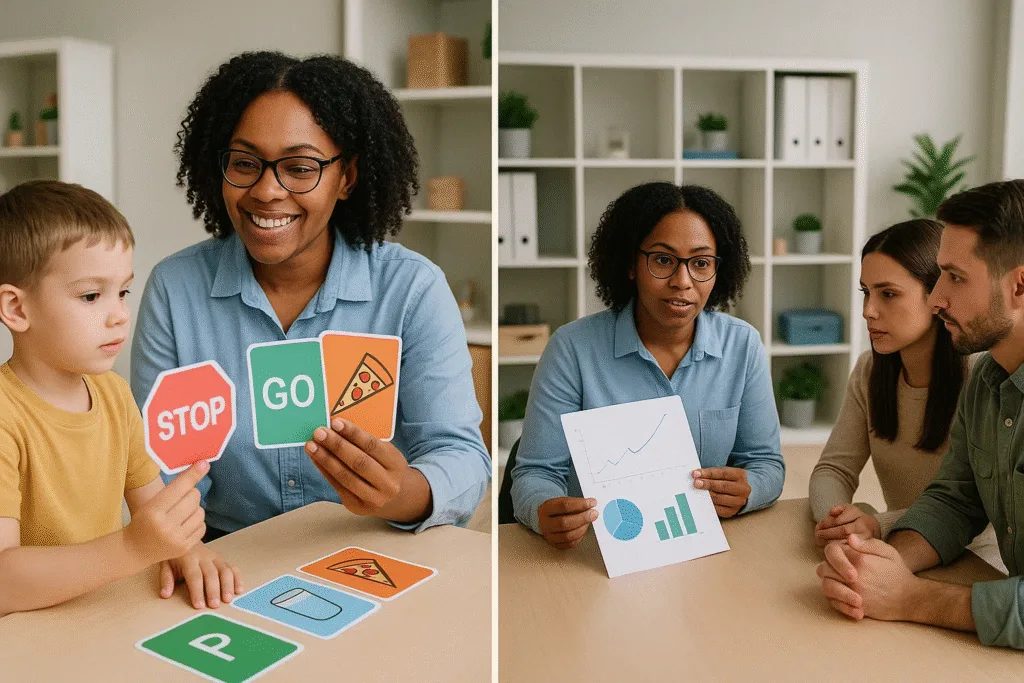
An RBT has to communicate with many different people in many different ways.
→ A nonverbal child may need visual cues.
→ A parent may need simple, step-by-step guidance to practice skills at home.
→ A supervisor may need accurate data explained clearly and without confusion.
Each situation requires not just words, but clarity, empathy, and adaptability.
Research shows that when RBTs communicate effectively, clients show faster learning, stronger social skills, and smoother overall progress. This means that good communication helps supervisors make smarter, data-driven decisions and empowers caregivers to confidently continue therapy outside the session.
- Observation & Data Collection Skills
ABA is an evidence-based field, and data collection is its foundation which makes it one of the most critical RBT skills to master.
For an RBT, this means accurately recording what happens in every session. How often a behavior occurs, how long it lasts, how strong it is, and whether new skills are being mastered.
Data provides the objective track of progress. It shows what’s really happening. These records allow the BCBA to see which ABA therapy techniques are working, which aren’t, and what needs to change.
So what does effective data collection look like in professional behavior technician training?
It means you must know how to:
- Record behavior frequency, duration, and intensity without bias
- Track skill acquisition consistently over time
- Use the right data sheets or digital tools correctly
- Be precise because small details reveal big patterns
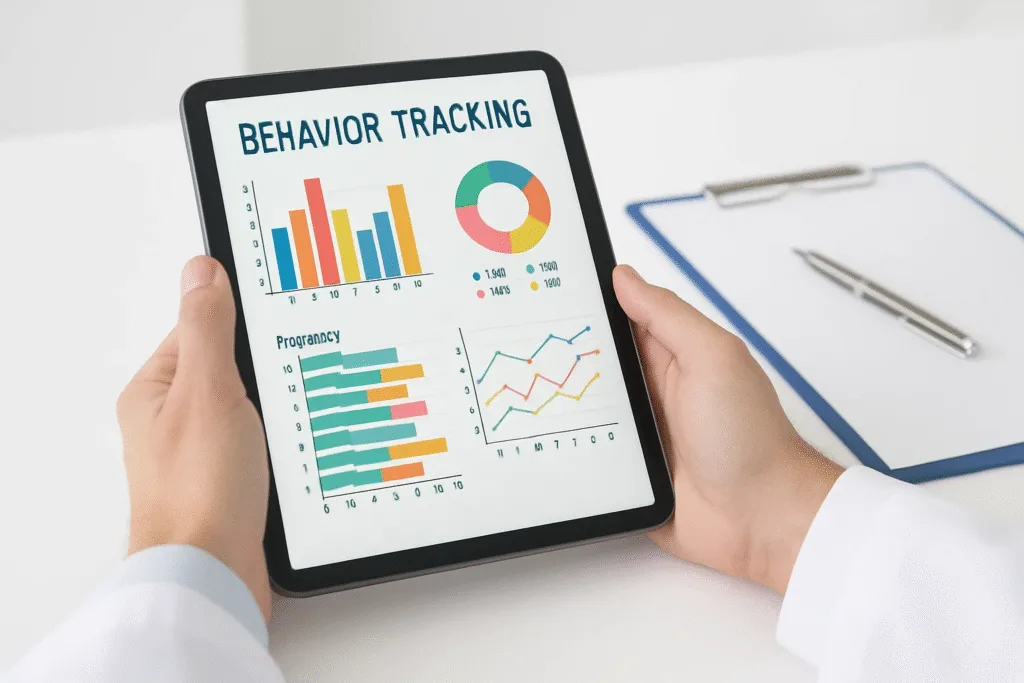
For example: An RBT carefully logs every tantrum a child has. How many times, how long, and under what conditions. After weeks of consistent tracking, the data shows tantrums are steadily decreasing. The team now knows the intervention is working. Without those records, they might have doubted the strategy or made unnecessary changes.
Data collection questions make up a significant portion of the RBT exam. Our FREE Mock Test gives you hands-on practice with frequency recording, duration tracking, and data interpretation. Don’t guess your way through these questions.
- Patience and Empathy
It takes a big heart to work with individuals who face developmental or communication challenges takes more than technical skill. And this is why patience and empathy are essential for an RBT.
→ Empathy allows you to step into the client’s perspective and understand their situation.
→ Patience gives you the calm persistence to teach skills slowly, celebrate small wins, and keep moving forward even when progress feels slow.
When empathy and patience combine, they create a growing environment for the kid.
So what does this look like in practice with advanced RBT skills?
It means you must know how to:
- Notice and validate a client’s emotions without judgment
- Stay calm and consistent when behaviors are challenging
- Slow down and teach at the learner’s pace
- Show warmth, encouragement, and genuine care in every interaction
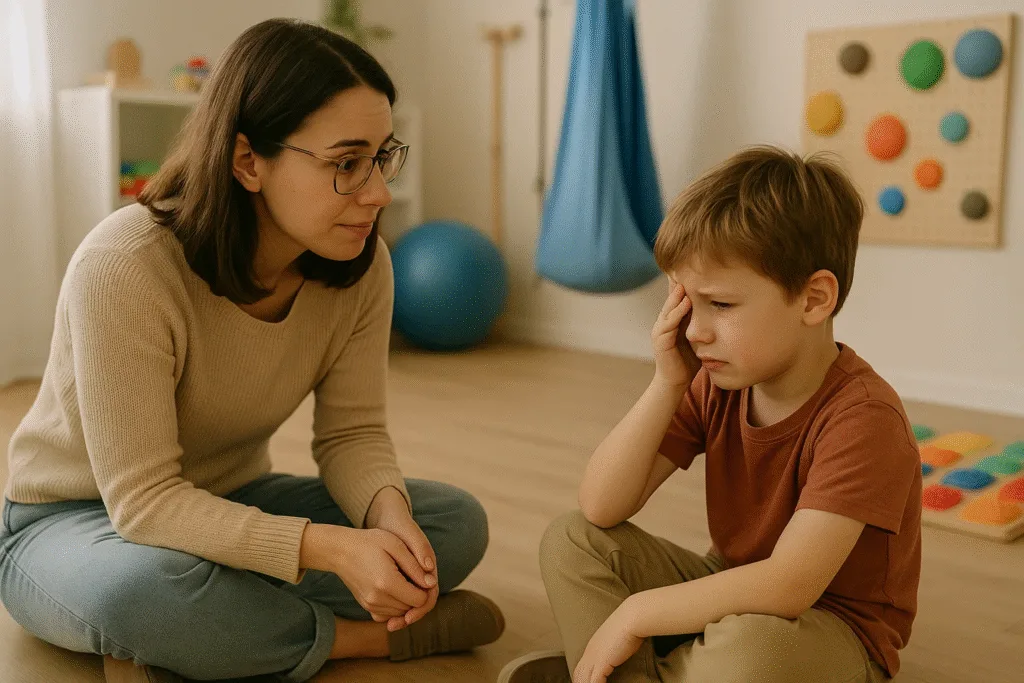
Without empathy, RBTs can appear distant, rushed, or frustrated. This not only increases a client’s distress but can also damage rapport with families.
Imagine pushing a nonverbal child to speak before they’re ready. What you see as persistence could feel overwhelming to them, triggering meltdowns or even regression.
- Adaptability and Flexibility
No two clients are the same, and even the same client can respond differently from one day to the next. That’s why adaptability is one of the most valuable RBT skills you can have.
When a strategy isn’t working, a flexible RBT doesn’t keep pushing. They pivot.
That might mean swapping reinforcement items, changing the environment, or breaking a task into smaller, more manageable steps. Flexibility keeps progress moving; rigidity stalls it.
So what does adaptability look like in practice with professional ABA therapy techniques?
It means you must know how to:
- Recognize when a strategy isn’t working
- Adjust reinforcement or materials based on the client’s preferences
- Break complex tasks into smaller, achievable steps
- Try alternative approaches without losing sight of the overall goal
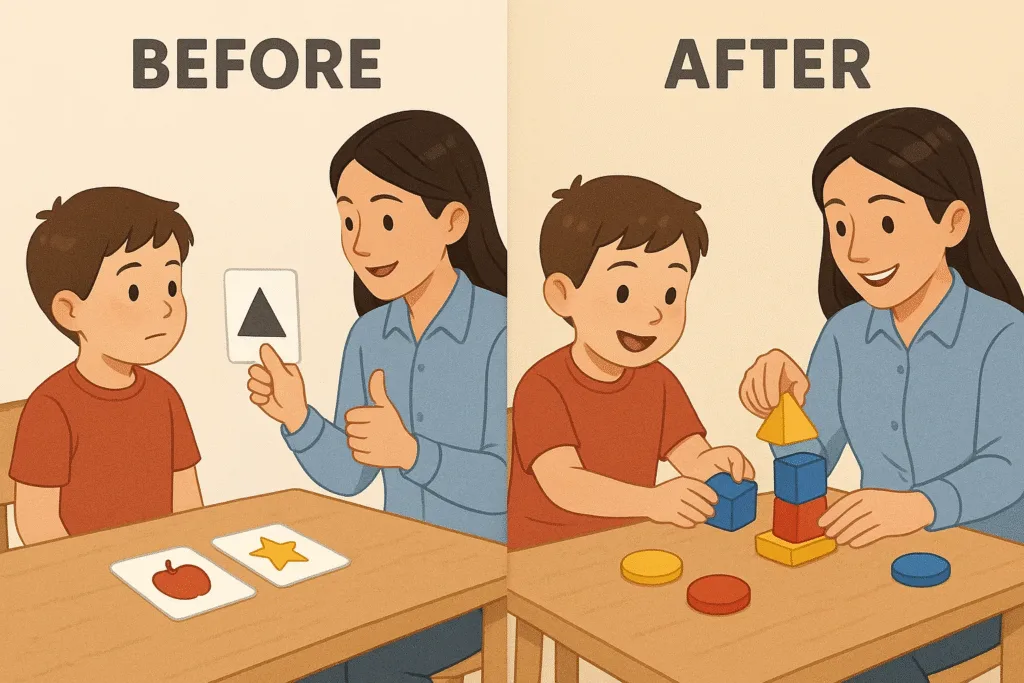
For example: A child loses interest in a puzzle task within minutes. Instead of forcing the activity, the RBT introduces a hands-on game the child enjoys. Once the child is engaged again, the RBT smoothly transitions back to the puzzle. The skill still gets practiced, but in a way that feels fun.
- Problem-Solving and ABA Techniques
Being an RBT means facing new challenges every single day.
A client might refuse a task, get distracted by something in the room, or stop responding to what used to be motivating. In those moments, strong problem-solving RBT skills with ABA therapy techniques are required.
Problem-solving means spotting what’s getting in the way and using ABA techniques to fix it.
It means knowing how to:
- Identify what’s blocking the client from engaging
- Apply ABA methods (reinforcement, prompting, shaping) with fidelity
- Modify teaching techniques to match the client’s needs in real time
- Stay resourceful and calm under pressure when unexpected hurdles arise
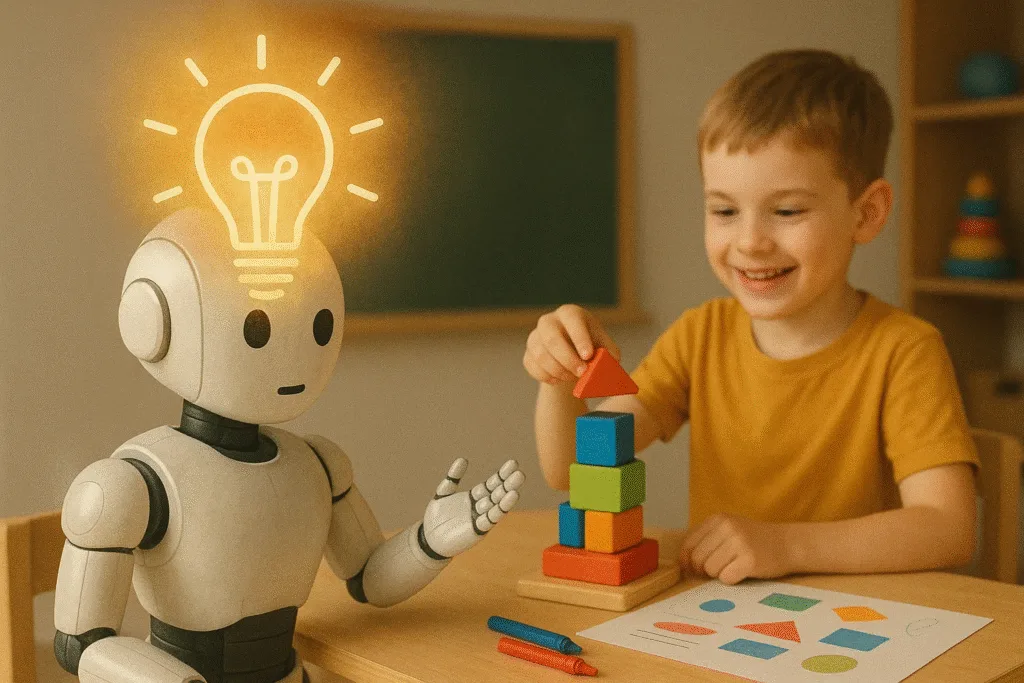
Without problem-solving RBT skills, an RBT may keep repeating an approach that’s failing. Imagine relying on praise as reinforcement even after a child stops responding to it. Unless the RBT finds a new motivator, progress stalls and frustration builds (for both the client and the team).
- Team Collaboration
RBTs are never working alone. They’re part of a team that includes BCBAs, teachers, and families.
Collaboration means sharing updates, planning together, and using the same ABA therapy techniques. When the team is consistent, the client gets steady support at home, school, and in therapy.
So what does good collaboration look like in behavior technician training?
It means you must know how to:
- Communicate openly with supervisors, parents, and teachers
- Share accurate observations and data to inform planning
- Coordinate reinforcement systems across settings
- Respect each team member’s role and input

If collaboration is missing, the learner may get mixed signals. An RBT can reward a behavior one way while a teacher uses a different method. The child won’t know which response is correct, slowing down progress.
- Cultural Competence and Sensitivity
ABA supports families from many different backgrounds. For RBTs, this means more than just delivering therapy. It means respecting culture, language, and traditions.
Culturally competent RBTs adjust their ABA therapy techniques to fit the client’s world, whether that’s using familiar examples, learning key phrases in another language, or adapting how they greet and interact.
So what does cultural competence look like in practice with advanced behavior technician training?
It means you must know how to:
- Be aware of family traditions, values, and daily practices
- Adapt materials, reinforcers, and examples to fit the client’s culture
- Use language that families understand (avoiding jargon or unfamiliar idioms)
- Show genuine respect through listening and learning
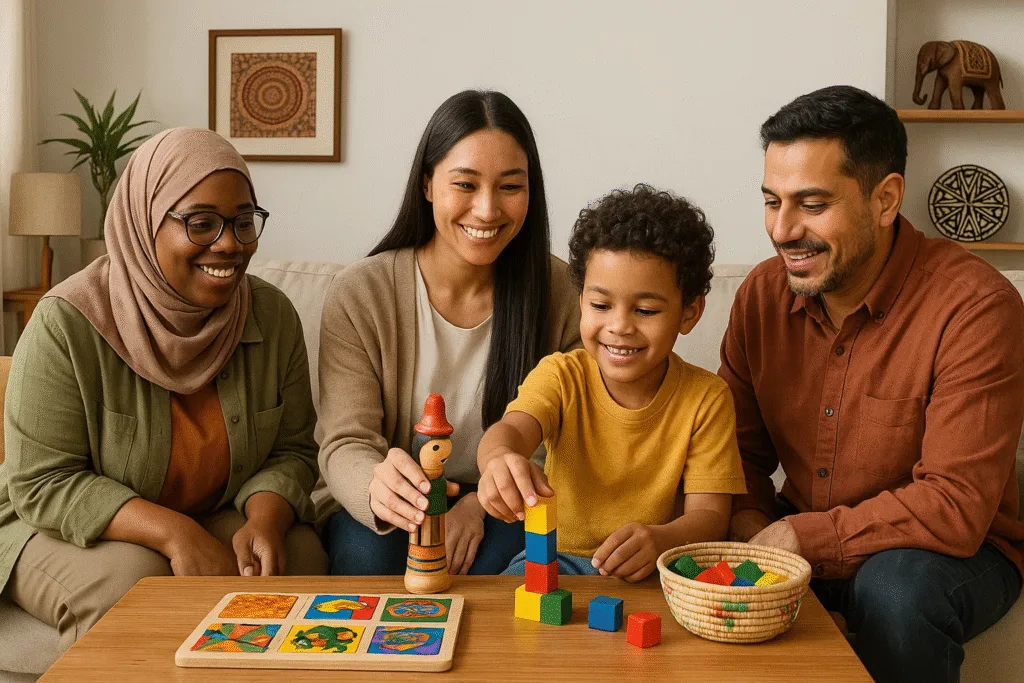
Without cultural sensitivity in your RBT skills toolkit, you risk confusing clients or alienating families. For example, using games or phrases unfamiliar to a child’s background might not only fail to connect. It could also create frustration or distrust.
Conclusion
Mastering these seven RBT skills is the survival of your ABA career. The field is growing, but it’s also getting selective.
BCBAs are tired of training RBTs who can only follow scripts. Families want practitioners who understand their children, not just their diagnoses.
The future signals that the field is heading toward professionalism, competency, and expertise. RBTs who develop these RBT skills now won’t just meet the new standards, they’ll exceed them.
Your certification got you started. These RBT skills and advanced behavior technician training will define your career trajectory.
Whether you become the RBT everyone requests or just another name on a schedule depends on what you do with this knowledge about essential ABA therapy techniques.
The choice is yours. But remember, while you’re deciding, other RBTs are already building these competencies. Don’t let them leave you behind.
You’ve learned what makes RBTs successful, now prove you’re ready for certification. Our comprehensive FREE Mock Test is used by thousands to test their preparation.
